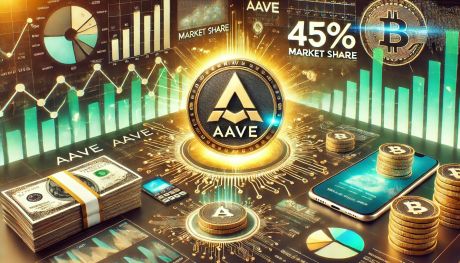
Opinion
To adhere to its decentralized ethics above all, the encryption industry often forgets its basic user: trading. What exists today is the ecosystem that gave priority to philosophical principles instead of practical use – which is simultaneously prevented from the most traders from the participating non -decentralized financing users and centers (Defi) to more central offers.
If Defi is set to expand the scope of speculation alone – and provide a meaningful alternative to Trafi – the primary focus should be the performance.
Enter the minimal decentralized decentralized (MVD). MVD can provide a pragmatic plan to maintain control resistance without sacrificing speed, reliability and ease of use on which real markets depend. Here is how MVD develops in the actual time.
Tradfi right where Defi makes a mistake
The nineties were marked as a historical transformation of Trafi. Since the dawn of futures in the nineteenth century as a new way to hedge from wheat and corn prices, these markets have evolved into one of the most liquid financial ecosystems ever.
The end of the twentieth century was a big leap forward with a declining manual inefficiency. Thanks to the electronic trading platforms, the world’s HFT trading is taking the world by storm. Tradfi laid the basis for technical infrastructure designed to serve its primary users – merchants – by emphasizing speed, reliability and implementation. Tradfi has expanded the scope of institutional confidence in the world and gained institutional confidence by giving merchants exactly what they need to prosper.
On the other hand, Defi was born due to ideology: it emphasizes decentralization at all price, arrival without permission and control. By doing this, the inherited performance restrictions such as slow twist times, inserting unexpected transactions and fragile end.
For example, the ETHEREUM times are made from 12 to 15 seconds that are not used for HFT, forcing successful projects like Dydx to move completely from the series. Moreover, the maximum extraction value (MEV) allows the stigmatizers to circulate the front or sandwiches, which makes the user confidence and quality of implementation.
These defects are more than just technical hiccups, which is why the foundations of Defi can analyze the integration of prices, create slide and maintain serious traders from participation. Now, even the most popular Defi protocols struggle to keep energy users and pay a large size, which proves that although the ideology is inspiring, the infrastructure is what is the standards.
Traders need the infrastructure that works
Although Defi was created to improve problems associated with central platforms (intermediaries, long settlement periods and transparency deficiency), merchants-especially high frequency and founders-are interested in performance above all. In other words, they want to measure the execution of millions again (not a second), and the back time during the fluctuations and trading that settles quickly, expected and just.
If Defi wants to compete with Trafi, decentralized infrastructure must meet new technical standards, such as HFT preparation. This includes the SUB-100MS block times, one second end, highly productive requests, and continuing to include SUB-50MS, MEV protection and 99.999 % of readiness.
Related to: The infrastructure of the current data threatens the future of Defi
Today, these qualifiers may look like luxuries, but honestly, they are risks on the table for the best merchants in the world. Therefore, if Defi wants to become the new global criterion for financing, he will have to start giving priority to what traders are more interested in.
It can coexist with resistance and control
One of the biggest Web3 problems is that it often treats decentralization as a bilateral. Most builders believe that it should be maximized at any cost, otherwise they were sold. Supreme performance systems consider the bodies and do not adhere to the principles of purity alone. This is the place where the thesis of the minimum decentralization (MVD) is played.
He argues that protocols can maintain enough to keep what distinguishes Defi without sacrificing performance. Resistance to control and access without great permission is at the end of the day. It is possible to maintain this ideal with the creation of the infrastructure that can serve real markets. With MVD, builders can consider the least possible decentralization while ensuring unreliable implementation. From there, they can improve what matters more to make trading truly applicable, such as cumin, final and productivity.
The new chains topped the road in this shift by balancing the user’s sovereignty with lean audit groups, rapid consensus and parallel implementation. This is just a starting point: MVD is still in its early stages, and many builders have a unique opportunity to create an open infrastructure at one time, fair and use.
MVD raises the standard for the next semester of Defi
In order for Defi the experimentation stage, you must fully adopt MVD. Speed demand: Institutions purchase more digital assets daily, and retailers experience more and more.
Today, Defi develops quickly, and derivatives are its fastest growing sector. Permanently decentralized markets are scheduled to process more than 351 trillion dollars by 2031 (more than 138 % grow on an annual basis), which competes with the Traffi scale. With early momentum of platforms like Hyperleliid and AEVO, it has become clear that Defi has real legs. At the same time, these protocols are still limited by the first -layer dependencies, synthesis specifications and unpredictable leveling times.
MVD will need to play a larger role. Today, Defi cannot depend on purity alone. It should rely on the performance, speed and adequate centralization to gain the confidence of its users.
Opinion: Doug Colette, a founder in Vogo.
This article is intended for general information purposes and does not aim to be and should not be considered legal or investment advice. The opinions, ideas and opinions expressed here are alone and do not necessarily reflect or represent the views and opinions of Cointelegraph.
The post Crypto Needs Minimum Viable Decentralization first appeared on Investorempires.com.




